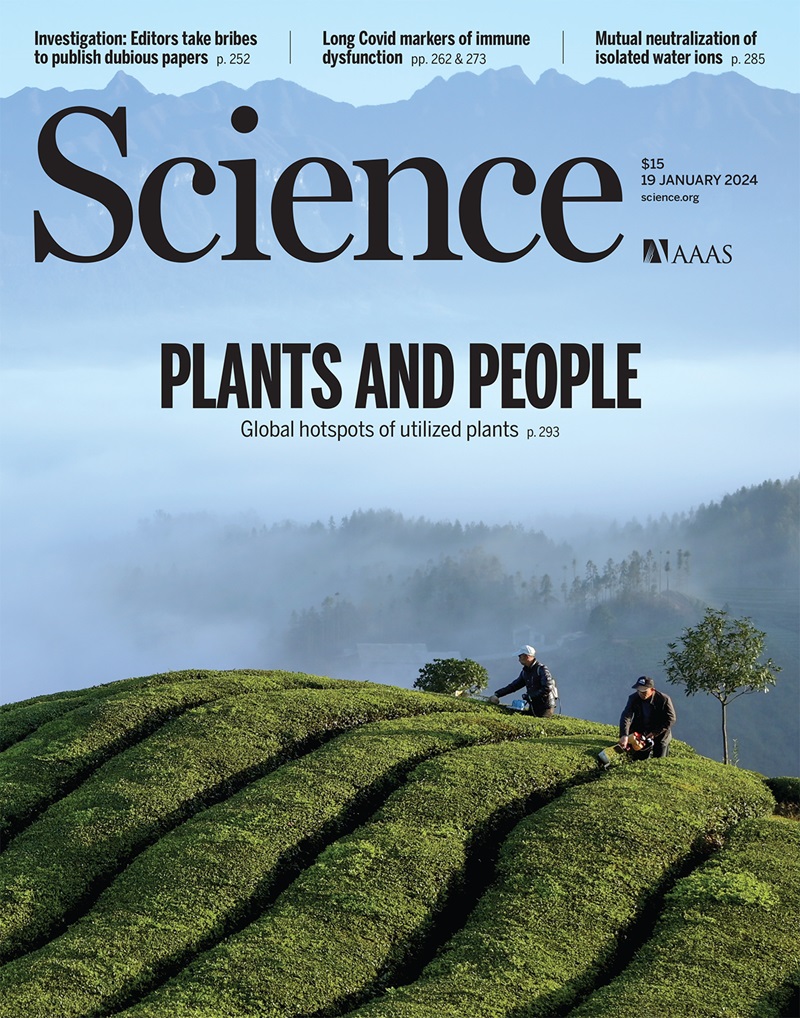Cascading land surface hazards as a nexus in the Earth system
IF 45.8
1区 综合性期刊
Q1 MULTIDISCIPLINARY SCIENCES
引用次数: 0
Abstract
This Review synthesizes progress and outlines a new framework for understanding how land surface hazards interact and propagate as sediment cascades across Earth’s surface, influenced by interactions among the atmosphere, biosphere, hydrosphere, and solid Earth. Recent research highlights a gap in understanding these interactions on human timescales, given rapid climatic change and urban expansion into hazard-prone zones. We review how surface processes such as coseismic landslides and post-fire debris flows form a complex sequence of events that exacerbate hazard susceptibility. Moreover, innovations in modeling, remote sensing, and critical zone science can offer new opportunities for quantifying cascading hazards. Looking forward, societal resilience can increase by transforming our understanding of cascading hazards through advances in integrating data into comprehensive models that link across Earth systems.

作为地球系统纽带的级联陆地表面灾害
本综述综合了研究进展,并概述了一个新的框架,用于理解陆地表面灾害如何在大气、生物圈、水圈和固体地球之间相互作用的影响下,作为沉积物级联在地球表面相互作用和传播。最近的研究强调了在人类时间尺度上理解这些相互作用的差距,因为气候变化迅速,城市扩张到危险易发区。我们回顾了同震滑坡和火灾后泥石流等地表过程如何形成复杂的事件序列,从而加剧了灾害易感性。此外,在建模、遥感和关键区域科学方面的创新可以为量化级联危害提供新的机会。展望未来,通过将数据整合到连接整个地球系统的综合模型中的进展,改变我们对级联危害的理解,社会复原力可以增强。
本文章由计算机程序翻译,如有差异,请以英文原文为准。
求助全文
约1分钟内获得全文
求助全文
来源期刊

Science
综合性期刊-综合性期刊
CiteScore
61.10
自引率
0.90%
发文量
0
审稿时长
2.1 months
期刊介绍:
Science is a leading outlet for scientific news, commentary, and cutting-edge research. Through its print and online incarnations, Science reaches an estimated worldwide readership of more than one million. Science’s authorship is global too, and its articles consistently rank among the world's most cited research.
Science serves as a forum for discussion of important issues related to the advancement of science by publishing material on which a consensus has been reached as well as including the presentation of minority or conflicting points of view. Accordingly, all articles published in Science—including editorials, news and comment, and book reviews—are signed and reflect the individual views of the authors and not official points of view adopted by AAAS or the institutions with which the authors are affiliated.
Science seeks to publish those papers that are most influential in their fields or across fields and that will significantly advance scientific understanding. Selected papers should present novel and broadly important data, syntheses, or concepts. They should merit recognition by the wider scientific community and general public provided by publication in Science, beyond that provided by specialty journals. Science welcomes submissions from all fields of science and from any source. The editors are committed to the prompt evaluation and publication of submitted papers while upholding high standards that support reproducibility of published research. Science is published weekly; selected papers are published online ahead of print.
 求助内容:
求助内容: 应助结果提醒方式:
应助结果提醒方式:


